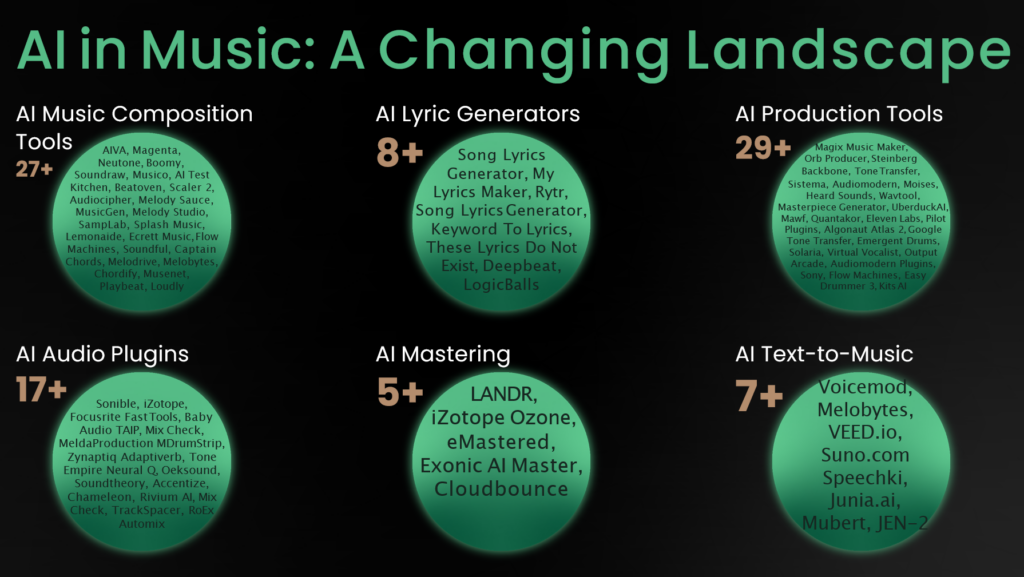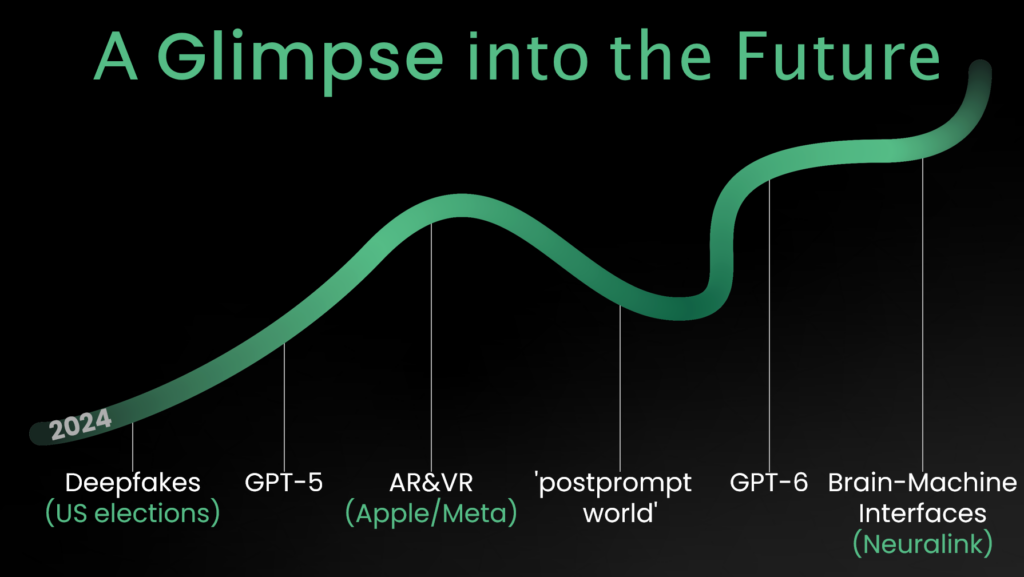Artificial intelligence researcher Martin Clancy believes in the possibilities of music.

Artificial intelligence or AI speaks and scares the music on the field.
However, longtime musician and researcher Martin Clancy opens up a positive side of artificial intelligence.
Clancy, who defended his doctorate on the subject, became famous in the field of artificial intelligence in music with his book Artificial Intelligence and Music Ecosystem.
In the book, Martin Clancy emphasizes the added value that artificial intelligence brings to creative activity and the music ecosystem.
As a leading expert in the field, Clancy emphasizes that artificial intelligence must also be faced in the field of music. It is surprising how much artificial intelligence has already been used in music.

“For example, even the distortion of an electric guitar is artificial intelligence, which Jimi Hendrix finally launched into the music field,” says Martin Clancy.
“Initially, the distortion of the guitar was caused by an incorrect connection, and it became a hit,” Clancy describes. According to him, artificial intelligence is everything where technology is used to change or improve music.
Even the distortion of an electric guitar is artificial intelligence, which Jimi Hendrix finally launched into the music field.”
“At its simplest, artificial intelligence is a technical application or solution that brings some added value to the music creative process,” says Clancy.
Martin Clancy wants to illustrate the role of artificial intelligence through an example.
“If we were making a record. One has a bunch of chords, the other has lyrics. In the beginning, however, everything starts from one idea. At first, we can just jam. But in order to move forward, you have to use programs like Pro Tools at some point. Everything always starts with the artist, and artificial intelligence doesn’t fight against that,” says Clancy.o.
Everything always starts with the artist.”
Clancy also emphasizes that a large part of artificial intelligence applications are already in general use (see infographics below).
“Once the song has been created, the artificial intelligence comes into play again,” says Clancy.
“Artificial intelligence is involved in every step of making music. And what if you wanted to make a music video out of everything? Again, that has its own artificial intelligence applications.”

Martin Clancy emphasizes that the ordinary musician can benefit from artificial intelligence more than before. He opens the issue through a parable.
“People spend a certain amount of money on music. Now the situation is that concert tickets and records are quite expensive. If you can use artificial intelligence to distribute your own product and music cheaper, I think it’s worth it. Instead of a concert ticket, you could, for example, buy a cheaper album made with the help of artificial intelligence from the artist,” says Clancy.
Composition tools (infographic 1) are widely available for the average artist. On the left side of the diagram are tools for creating melodies. On the right, again, there are tools related to music production, which help with mixing, for example. In addition, there are several text-to-music applications.
“All of these are well suited for use by the average musician. And here, too, only a small part has been presented,” says Clancy.
“In my opinion, a large part of these AI tools are already familiar to musicians. Drum applications are a good example. Almost everyone uses them. Similarly, audio plug-ins are used by practically everyone. I’m not marketing these AI elements, I’m just stating the facts,” says Clancy.
“Musicians don’t even consider all artificial intelligence as artificial intelligence. We are so used to these,” Clancy emphasizes.
However, the challenge is a number of phenomena in the music field, such as look-a-like videos and copying the artist’s own brand. Martin Clancy suggests local solutions to these problems.
“There is no single major supervisory body for the use of artificial intelligence in music. National solutions must be found to make AI acceptable.”
“I have launched the AI OK program, where music copyright guardians, musicians and other stakeholders meet and agree on common rules of the game. Gramex has now taken up the subject, but in Sweden and Norway we are already further along. I am happy to participate in organizing the discussion in Finland as well”, says Clancy.

“When I did my research, I worked with the IEEE, which is the world’s most comprehensive artificial intelligence coordinating and standardizing body. They came up with a comprehensive approach to the ethics of artificial intelligence already in 2018.”
“It influenced at least the EU’s artificial intelligence legislation. This in turn influenced the OECD, which in turn influenced the UN’s sustainable development goals. The goal is to secure, among other things, a vibrant and fair music industry,” says Clancy.
“The Irish government is now funding the AI OK project. For example, I have a lot of discussions in Sweden and Norway about accepting the AI OK idea.”
“The goal is to respond to the artificial intelligence challenge and create a musical artificial intelligence brand that shows that the use of artificial intelligence has been agreed with key parties and that it is also OK for musicians,” says Clancy.
It’s more about what encourages continuous employment and what is related to the UN’s sustainable development goals in this way.”
The goal is to create a brand or a kind of label that unites ethically harmonized AI products and services in the music industry and perhaps in the arts as well.
According to Clancy, it is not relevant to say that this is artificial intelligence-produced or this is not artificial intelligence-produced music, even if it could be done this way.
“For me, it’s more about what encourages continuous employment and what is related to the UN’s sustainable development goals in this way,” Clancy opens.
In the near future, there will be Deepfake events — in a way that distorts the combination of people’s identity and, for example, voice — in connection with the US presidential election, the reform of the GPT-5 coding software, new openings by Apple and Meta on the artificial intelligence front, postprompt artificial intelligence, i.e. predictive design, the GPT-6 version and finally artificial intelligence directly linked to the brain.

“In my opinion, the picture (pnfographic 2) shows the future of music artificial intelligence in the next 18 months. Basically, technology is accelerating so much that the next changes are radical. The legal situation is that the adaptation of legislation is too slow. Laws change in every country, but they don’t keep up with what’s really happening,” says Clancy.
The legal situation is that the adaptation of legislation is too slow.”
“About a year and a half ago, the term ‘anticipatory or rapid planning’, i.e. postprompt, became more well-known in music circles. This rapid development is especially important to take into account, because the different work tasks of musicians may change or change shape due to artificial intelligence”, states Clancy.
For example, sound engineers have been mainstays of the music industry for decades.
“The emergence of ‘prompt engineers’ may seem simplistic, but we are moving towards a future of ‘fully predictive prompting’ – akin to predictive texting – where generative systems intuitively anticipate our needs.”
“In music, this reduces the need for manual intervention or many inventions. This is what I call the “post-prompt world,” says Clancy
“With its strong music-related ecosystem like iTunes, Apple Music and Logic Pro, Apple plays a big role. Meta has good opportunities for promoting music through its platforms like Facebook and Instagram,” says Clancy.
Additionally, Clancy noted that Apple and Meta are investing heavily in XR (AR/VR) technologies with the latest headsets: Meta’s Oculus and Apple’s Apple Vision Pro.
“These developments represent significant steps towards the long-awaited metauniverse, an evolution from previous projects such as Second Life and various immersive environments. The potential of these technologies is huge, but we can be sure that content, especially music, will play a leading role.”
We can be sure that content, especially music, will play a leading role.”
Meta’s investment in open source concert tools is likely to attract many, Clancy envisions. Of course, the exact future of these technologies is still open. Next year, the introduction of Apple’s high-end Vision Pro will likely affect the market for Meta’s more affordable Oculus headset. This foreshadows growing competition and innovation in AR/VR, which will have significant implications for content creation, especially in the music industry.
But music as an industry will grow with artificial intelligence, according to Clancy.
Clancy gives an example of the global potential of artificial intelligence. Clancy says the global music industry is worth about $40 billion. Starbucks is worth about $120 billion.
“So music has room for growth. Is Starbucks really a much more valuable brand than the global music business? People are ready to invest money in what is important to them. And who would argue that music isn’t important to people?”